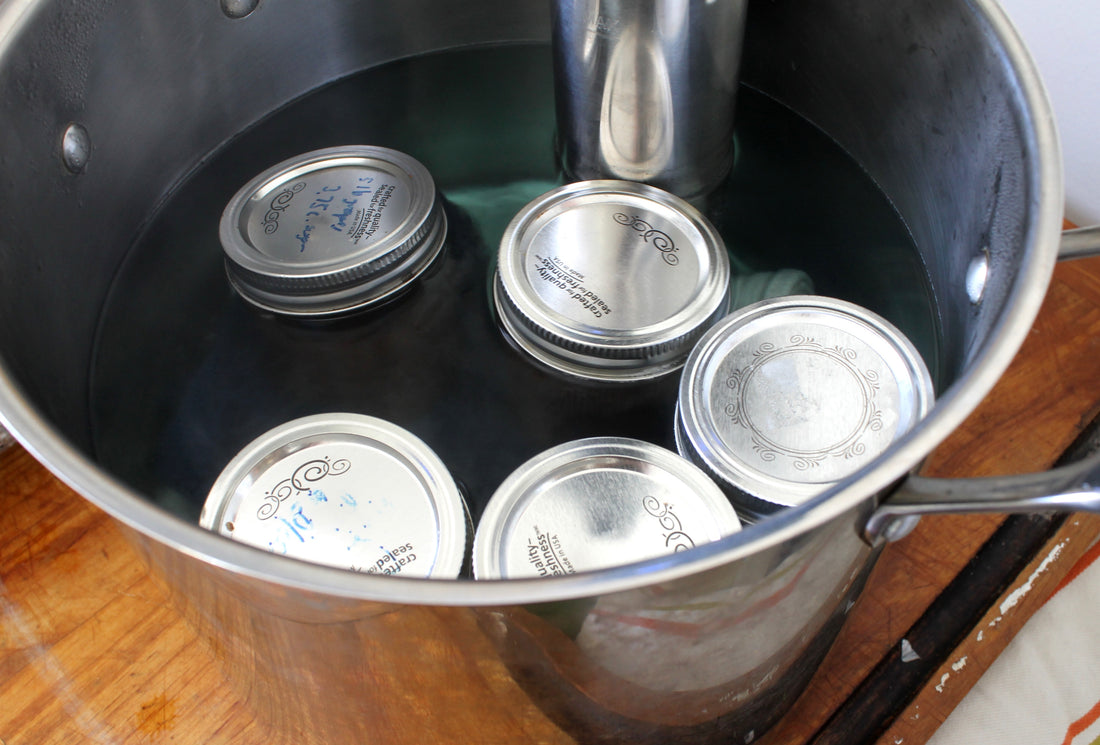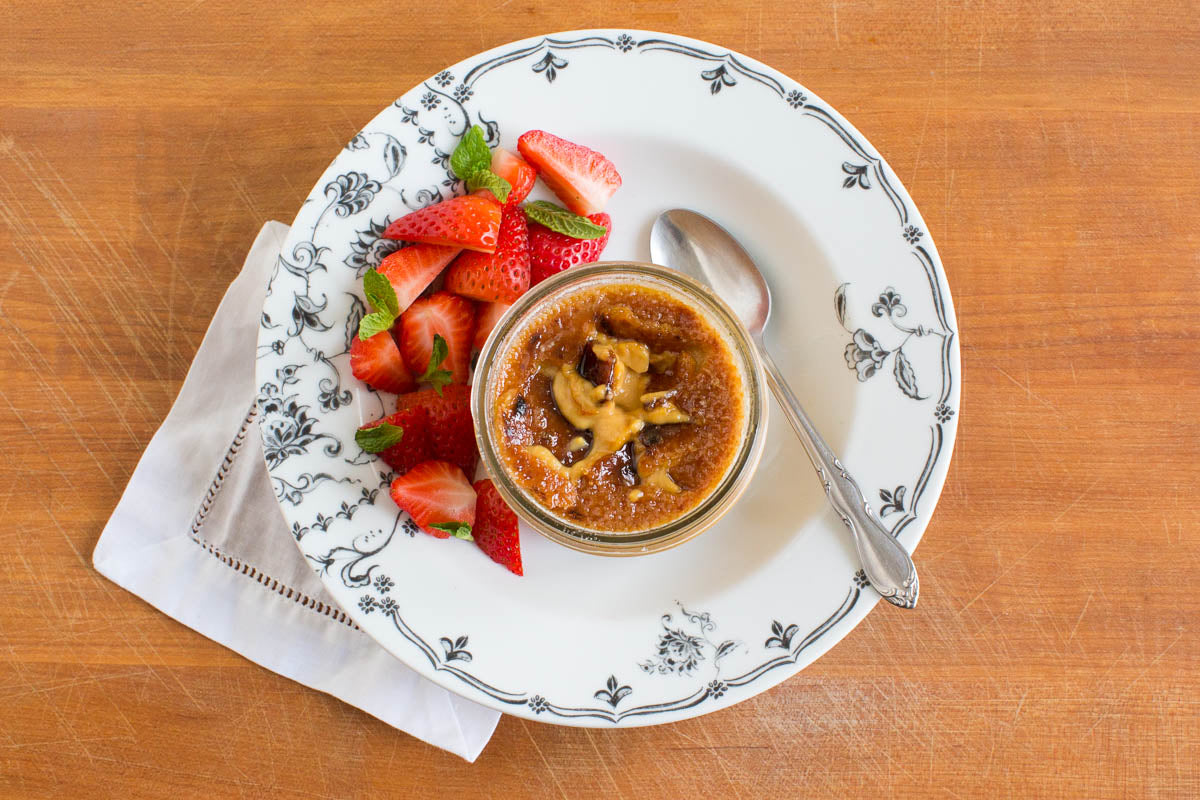Sous Vide Canning
Sous vide cooking doesn't always require plastic. Glass canning jars are also a fine cooking vessel, especially with recipes that require a lot of liquid or a high cooking temperature. We've also had great success making baked goods like cakes and cookies in glass jars, but we suspect we're only scratching the surface of potential uses for these versatile vessels. Plus, canning jars are re-usable, so you can cut down on quite a bit of waste, especially when you're using your Precision Cooker all the time! There are, however, a few tips and tricks to keep in mind when cooking in sous vide jars. Some of these tips may be familiar if you read our guide to baking, but this blog goes into greater detail so you can do more than just bake in your sous vide glass.Canning with Sous Vide
1. Select the Right Recipe
Not everything should be cooked in a canning jar. Many sous vide recipes rely on a complete air-tight vacuum seal for the best results. Most meats are not suitable for sous vide mason jar recipes. Fruit and vegetables that are bulky, delicate, or juicy (think corn on the cob, asparagus, and tomatoes) are also not good options. However, any recipe that calls for a large amount of liquid or fat can be adapted to sous vide glass cooking. Confits — of either poultry or vegetables — are a great example. The only downside to confit-ing in sous vide jars is that you will likely need to increase the amount of fat. We like to fill a sous vide jar with dried beans or grains as well as to culture yogurt and creme fraiche. Pickled produce is another great choice. You can easily adapt these recipes for bread and butter pickles and pickled radishes to fit in canning jars. Other preserves, like this strawberry-rhubarb shrub or chili agave liqueur are also easily adaptable. Note: If you're modifying an existing recipe, like the ones above, you may need to increase the amount of liquid used to keep ingredients submerged. Desserts and other baked goods are, by far, our most popular jar-based recipes. We've already shared our tricks for baking cakes and cookies in the Precision ® Cooker, but other desserts like custards, bread pudding, flan, and creme brûlée are also yummy treats that make use of sous vide canning jars. Our recipes for vanilla and chocolate pudding, dulce de leche, and ice cream will also work well following this method. Simply mix up the base following recipe directions and transfer to a quart-sized sous vide glass jar instead of a plastic bag to cook.
2. Choose and Fill Your Sous Vide Mason Jar Correctly
- Baking: Never fill jars containing leavened batter or dough more than half full. You definitely don’t want to blow the lid (or break the jar) while desserts are submerged in the water bath. For baking, we like to use small, half-pint jars for two reasons: first, they're cuter. Second, they help to ensure that the dessert is cooked all the way to the center in a reasonable amount of time (read: not all day).
- Grains: Most grains also expand as they cook, often above the water amount added. We never fill jars containing grains more than three-quarters full (and often less, just to be safe). We like to cook grains in pint or quart-sized jars.
- Other Recipes: Ingredients that only expand a small amount, or (like beans) that won't expand past the water line, can be packed more tightly in the jars. It is still a good idea to leave at least 1/2 inch to 1 inch of space at the top of the jar just to be safe.
3. Finger-Tip Tight is Tight Enough
We've said this once, and we'll say it again (and again): Never ever tighten the jar lids all the way. Air needs to be able to escape from the jars when these recipes are cooking. Screw the bands on just until you start to feel resistance. This is tight enough to prevent water from seeping into the jars and will still allow for air to escape.4. Prevent Thermal Shock
The biggest risk when cooking in canning jars is that they can break. We've had community members report that their jars have broken when they are added to the hot water. Why? Glass is sensitive to rapid temperature changes and can crack or even explode. (The phenomenon is called thermal shock, and is the same reason why you can't put Pyrex under the broiler.) Depending on how worn and banged up your jars are, they may be more or less prone to breakage. The best way to prevent cracked jars is to bring them up to temperature gradually. Here are two methods:
4.1. ... About that Water Bath...
You'll need a lot of water and space when you're cooking with jars. Because they're more dense than plastic, they'll displace more of the water bath than a plastic bag. We like to use either a deep stock pot or a large plastic tub for sous vide cooking in jars.5. Submerge the Jars and Keep an Eye on the Water Line
If you've sealed the jars correctly, you won't need to worry about keeping the jar tops above the water line.When we first started cooking in jars, we were concerned about preventing water from making its way into the jar. We tried lining the pot with a rack and kitchen towels to prop up the jars, but eventually gave up. It's much easier just to place the jars carefully into the water bath and let them float or sink as they please. They'll be just fine.









1 comment
Does anyone know of an actual cookbook for Sous Vide canning? Thanks.